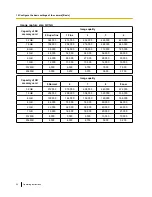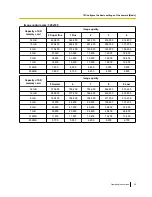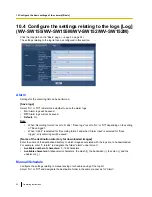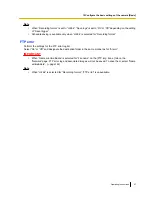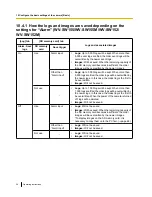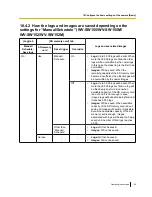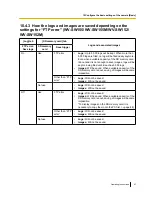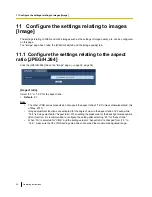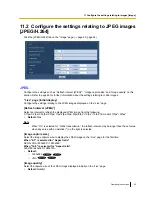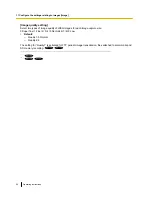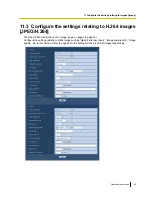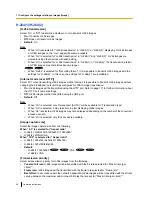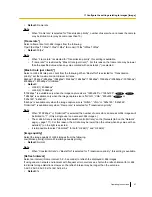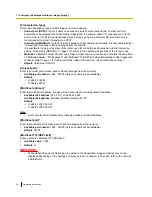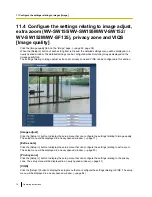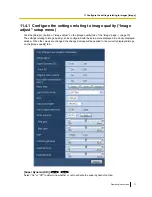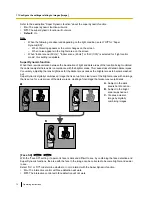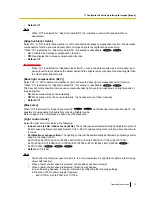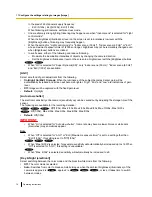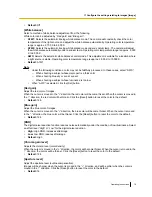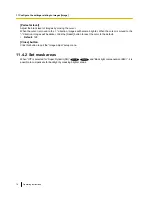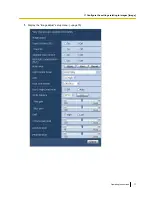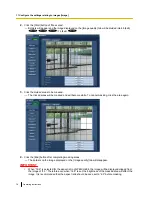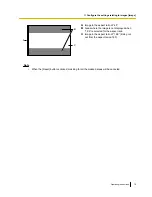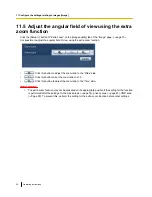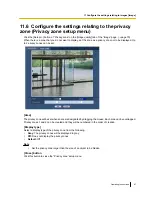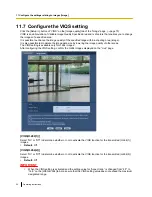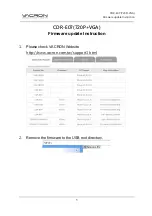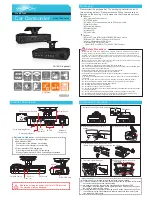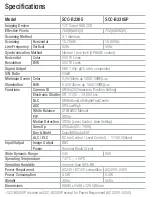
[Transmission type]
Select the transmission type of H.264 images from the following.
•
Unicast port (AUTO):
Up to 14 users can access a single camera concurrently. “Unicast port” will
automatically be selected when transmitting images from the camera. When it is unnecessary to fix the
port number for H.264 image transmission such as when using in a particular LAN environment, it is
recommended to select “Unicast port (AUTO)”.
•
Unicast port (MANUAL):
Up to 14 users can access a single camera concurrently. It is necessary to select
“Unicast port” manually to transmit images from the camera.
It is possible to fix the port number of the router used for H.264 image transmission via the Internet by
setting “Unicast port (MANUAL)” (
®
page 111). Refer to the operating instructions of the router in use.
•
Multicast:
Unlimited number of users can access a single camera concurrently. Complete the entry field
of “Multicast address”, “Multicast port” and “Multicast TTL/HOPLimit” when transmitting H.264 images with
multicast. Refer to page 7 for further information about the maximum concurrent access number.
•
Default:
Unicast port (AUTO)
[Unicast port]
*3
Enter the unicast port number (used to transmit images from the camera).
•
Available port number:
1024 - 50000 (Only even numbers are available.)
•
Default:
–
H.264(1): 32004
–
H.264(2): 32014
[Multicast address]
*4
Enter the multicast IP address. Images will be transmitted to the designated IP address.
•
Available IPv4 address:
224.0.0.0 - 239.255.255.255
•
Available IPv6 address:
Multicast address starting with “FF”
•
Default:
–
H.264(1): 239.192.0.20
–
H.264(2): 239.192.0.21
Note
•
Enter a multicast IP address after checking available multicast address.
[Multicast port]
*4
Enter the multicast port number (used to transmit images from the camera).
•
Available port number:
1024 - 50000 (Only even numbers are available.)
•
Default:
37004
[Multicast TTL/HOPLimit]
*4
Enter a value for “Multicast TTL/HOPLimit”.
•
Available value:
1-254
•
Default:
16
IMPORTANT
•
When transmitting an H.264 image via a network, the transmitted image sometimes may not be
displayed depending on the settings of a proxy server or a firewall. In this case, refer to the network
administrator.
68
Operating Instructions
11 Configure the settings relating to images [Image]

